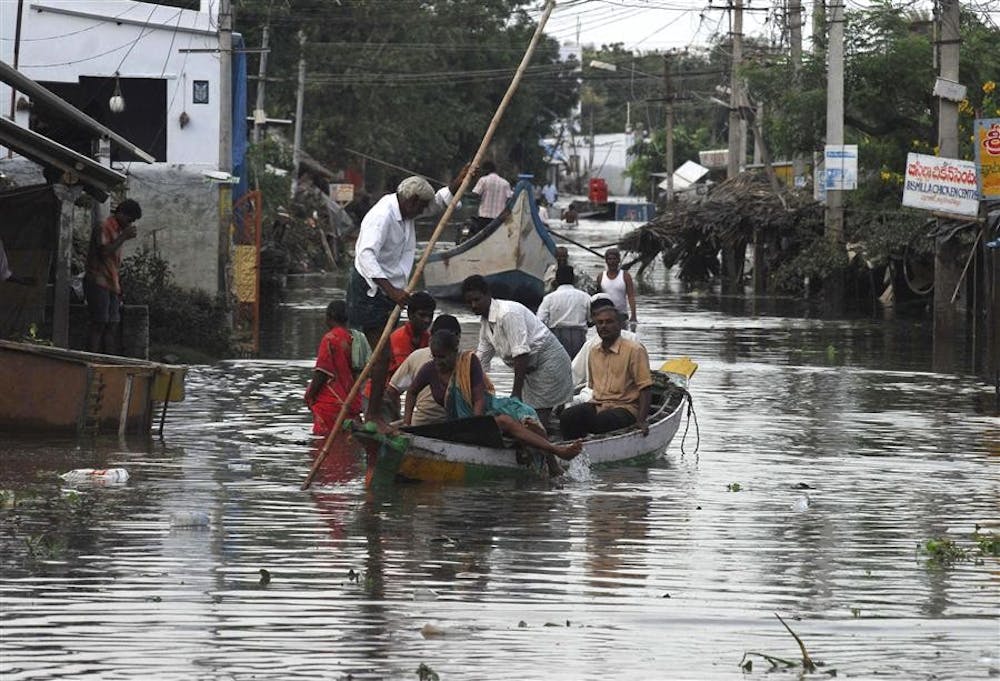HYDERBAD, India - We all know floods can be detrimental. If there was ever any doubt, the flooding from Hurricane Katrina surely diminished it.
In Andhra Pradesh, India, flooding is beginning to take over, and people are worried as the number of casualties approaches 300.
I suppose it started months ago when I packed a rain jacket in response to the warnings that monsoon season in southern India meant there would be torrential downpours constantly. I arrived to sunny skies.
“The rainy season is late,” newscasters reported.
Crops were suffering where there wasn’t proper irrigation or sufficient water. The rice patties had gone dry.
I was beginning to think that perhaps the monsoon had skipped India altogether. But just when it seemed the rains had moved elsewhere, fueled by whatever global warming trick-of-fate causes these weather phenomena, the rains began to come down hard.
And then the puddles became lakes.
According to local news, more than 2.5 million people have been left homeless from these floods and about 1,200 relief camps have opened. Numbers like this make me question certain local and global infrastructure designs.
First, 2.5 million people is a huge number to be left homeless, even in one of the most heavily populated areas of the world. Second, that a flood can affect an area that experiences monsoon rains yearly makes me question city set up.
While the Indian government has often taken a hands-off approach to local infrastructure, giving favor to smaller, localized government planning, it seems some flooding prevention might have been done.
This is, of course, echoing many of the complaints heard in the United States after Katrina when we realized a routine reinforcement could have prevented much of the damage.
For this flooding, could people in high risk areas have been relocated? Could the flood gates, which were just inches too short, have been built for greater capabilities? The fact of the matter is that the greatest damage often occurs in low-altitude, low-income areas.
It’s clear who is affected the most by these types of natural disasters: the poor.
When so many people are already living in low-altitude slums in India, it’s not surprising that their homes would be washed away by heavy rain and the persistent pressure of flooding.
Slum homes generally follow a specific build. There is a wood skeleton with tarps or palm leaves wrapped generously around to make a large tent. Often, the homes do not have doors, and I’ve yet to see one with a floor.
In short, they’re not much of a shelter at all. It’s no surprise that so many people are left homeless.
Perhaps India should look into a more active approach to natural disaster prevention and slum aid, but this is not a problem unique to India.
The dramatic effects of this flooding should serve as a wake-up call to countries around the world to proactively address disasters rather than waiting for emergency response aid.
Hundreds of slums washed away, again

Get stories like this in your inbox
Subscribe



